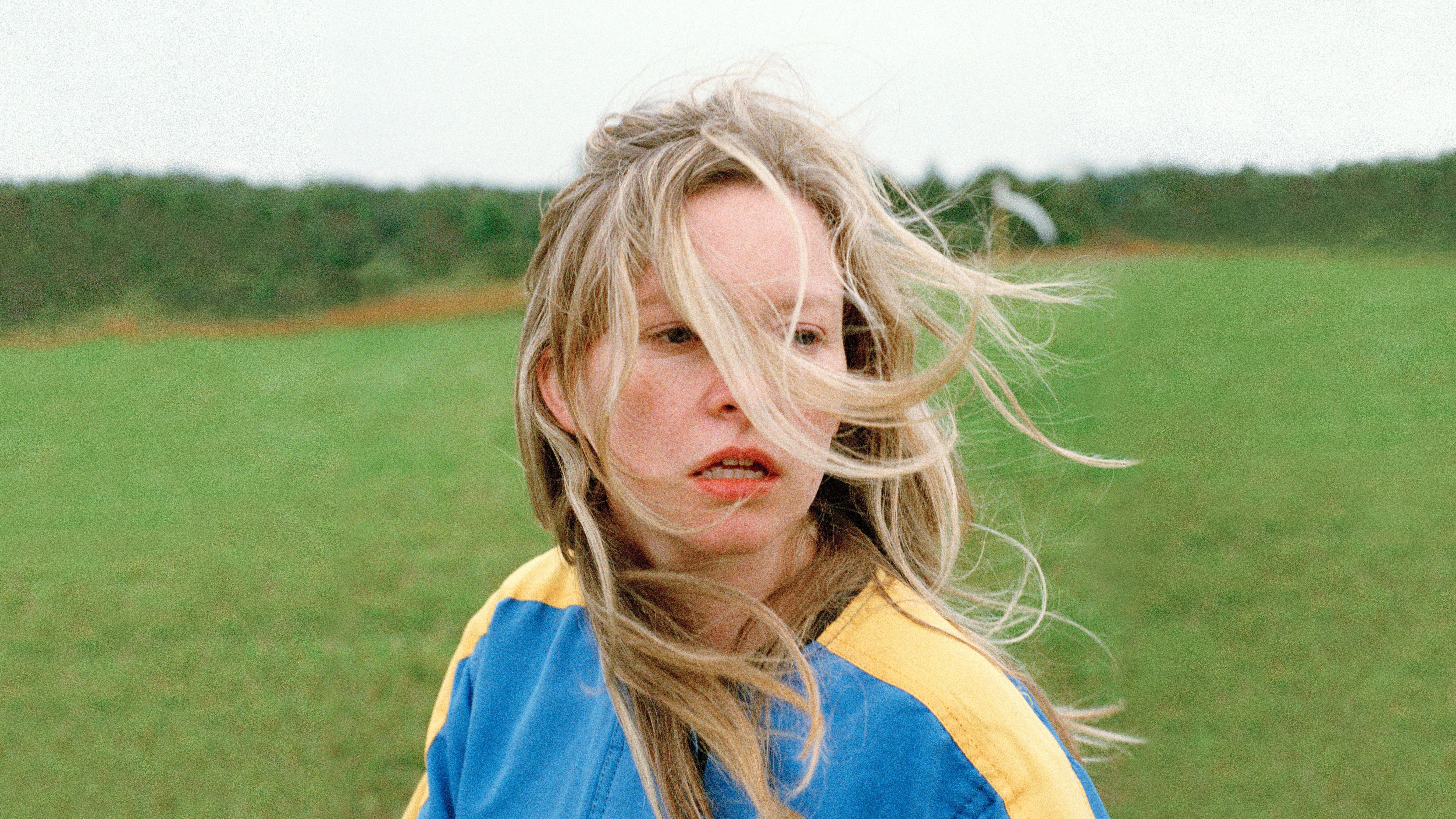Anne At 13,000 Feet is a harrowing, mysterious portrait of mental illness
Think A Woman Under The Influence, though not nearly as long or exhausting

The first time we see the title character of Anne At 13,000 Feet, she’s entertaining a group of children, showing them a butterfly she’s caught, at one point gently placing it on a little girl’s face. (“Close your eyeball, close your eyeball!” advises one of the other kids.) This turns out to be Anne’s job—she works at a daycare center—and everything we see suggests that she’s quite good at it, if perhaps a bit unorthodox in her methods. The choice of vocation is a crafty one on the part of writer-director Kazik Radwanski, however, as it falsely contextualizes certain personality traits, encouraging us to assume that they’re entirely performative. Juvenile behavior looks normal when the adult in question is surrounded by and relating to actual juveniles, and Deragh Campbell, who plays Anne, expertly modulates her performance, especially early on, in ways that are psychologically credible but also amount to a sort of misdirection. It takes a while to realize that you’re watching someone very damaged struggling to maintain her grip, and that the film’s clear spiritual predecessor is John Cassavetes’ harrowing A Woman Under The Influence.
To be sure, this woman is significantly younger, and this study in neurosis a great deal shorter. (Clocking in at a brisk 75 minutes, it’s less than half the length of Cassavetes’ epic.) Radwanski, who’s Canadian, isn’t much for prolonged shouting matches, either, guiding Campbell in outbursts that can only be described as demurely manic. Anne doesn’t say or do anything too outrageous—she just frequently ignores basic social cues, pushing into uncomfortable territory while constructing absurd on-the-fly rationalizations for doing so. This tendency finally becomes unmistakable about 20 minutes into the film, when Anne’s supervisor at the daycare center (Suzanne Pratley) very politely tells Anne to get rid of a cup of takeaway coffee, as hot liquid isn’t permitted around the kids. Anne initially responds by placing the cup on a higher surface; when instructed again to remove it (still politely), she dumps the coffee down the sink and then “playfully” throws the cup at her supervisor. The resulting argument goes on for a small eternity, with Anne giggling nonstop, ludicrously insisting that she threw the cup in order to demonstrate that she’d emptied it as requested, inviting the supervisor to throw an empty coffee cup back at her in retaliation—anything but just take responsibility, apologize, and move on. “What is wrong with you?” the supervisor eventually asks.
That’s not a question to which Anne At 13,000 Feet wants to provide a clear-cut, easily digestible answer. Other characters, most notably Anne’s endlessly patient mother (Lawrene Denkers), tiptoe around Anne in a way that suggests a known diagnosis, even if we never learn its nature; it’s even possible that her job at the daycare center constitutes a form of mandated therapy for her, though that’s never expressly stated. (“You think I want to work with you?” asks the supervisor at one point, significantly.) Anne can appear functional for periods of time—enough so, in fact, that she attracts the romantic attention of a nice fella (Matt Johnson, director and star of The Dirties and Operation Avalanche) who speedily realizes that he had no idea what he was getting himself into. Mostly, the film serves as a high-wire showcase for Campbell, who’s also credited at the end with “additional writing”; she does a superb job of maintaining a tenuous façade of control, in much the way that great actors portray drunkenness as a valiant effort to appear sober. There’s always an air of plausible deniability to Anne’s troubling behavior, which she couches as a joke or prank when confronted. Most remarkably, there’s never a sense that the kids are in any real danger around her, despite the instability we see at other times. That’s a tricky line to walk.
That Radwanski so expertly navigates the fraught subject of mental illness, avoiding most pitfalls, makes it at once harder to understand and easier to forgive the lack of subtlety in Anne At 13,000 Feet’s titular controlling metaphor. When the film begins, Anne has recently taken up skydiving; we see her jump from a plane both at the beginning (with an instructor) and at the end (solo), with several training sequences scattered in between. That’s way too much emphasis, because it’s very clear from the outset that Anne’s exhilaration in freefall represents her mental state on solid ground. Maren Ade’s terrific debut feature, The Forest For The Trees, concludes on a similar note (involving a car rather than a plane), but it works in that instance because it’s unexpected rather than having been methodically established throughout the movie. Still, Radwanski shoots the second jump from a very different perspective than he does the first, and there’s meaning in that distinction. If the worst thing one can say about a film is that it’s perhaps too carefully thought out (especially for a portrait of irrationality), it’s getting the important things right.